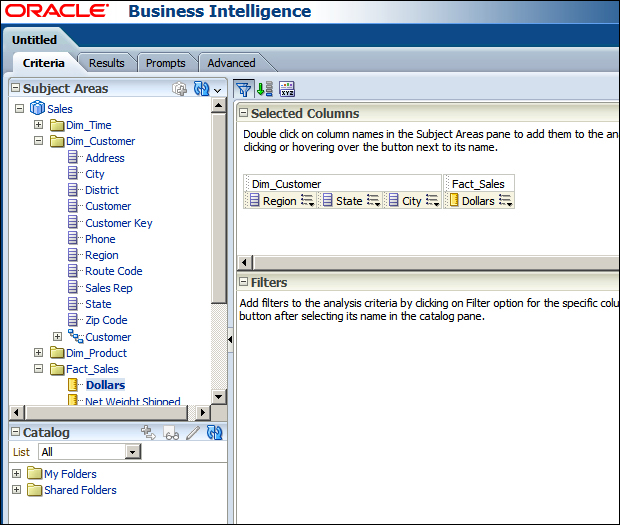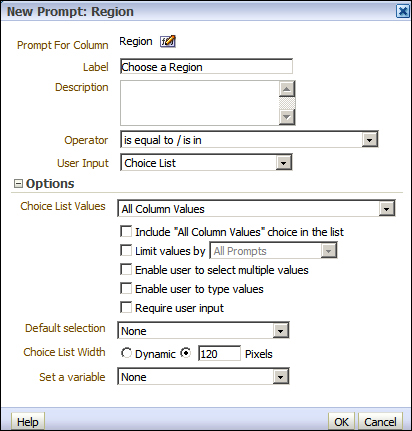When it comes filtering data dynamically, it'll be good to allow end users to select the values from a drop-down list. We can achieve this by using Column Prompts. To demonstrate the column prompts, we're going to use a new analysis that consists of four columns as you'll see in the following screenshot:

After creating the sample analysis, click on the Prompts tab. Click on the Add Prompt icon and go to Column Prompt | "Dim_Customer"."Region".

The New Prompt: Region window will pop up on the screen. Set the Label value as
Choose a Regionand don't change any settings in the windows. Just click on the OK button.
You'll see that the new column prompt is created. Create one more column prompt that's based on the
Statecolumn this time. But in this one, we're going to select the Limit Values by checkbox and select the Choose a Region column prompt. This setting will make theStatevalues be populated based on theRegioncolumn values. Click on the OK button...



